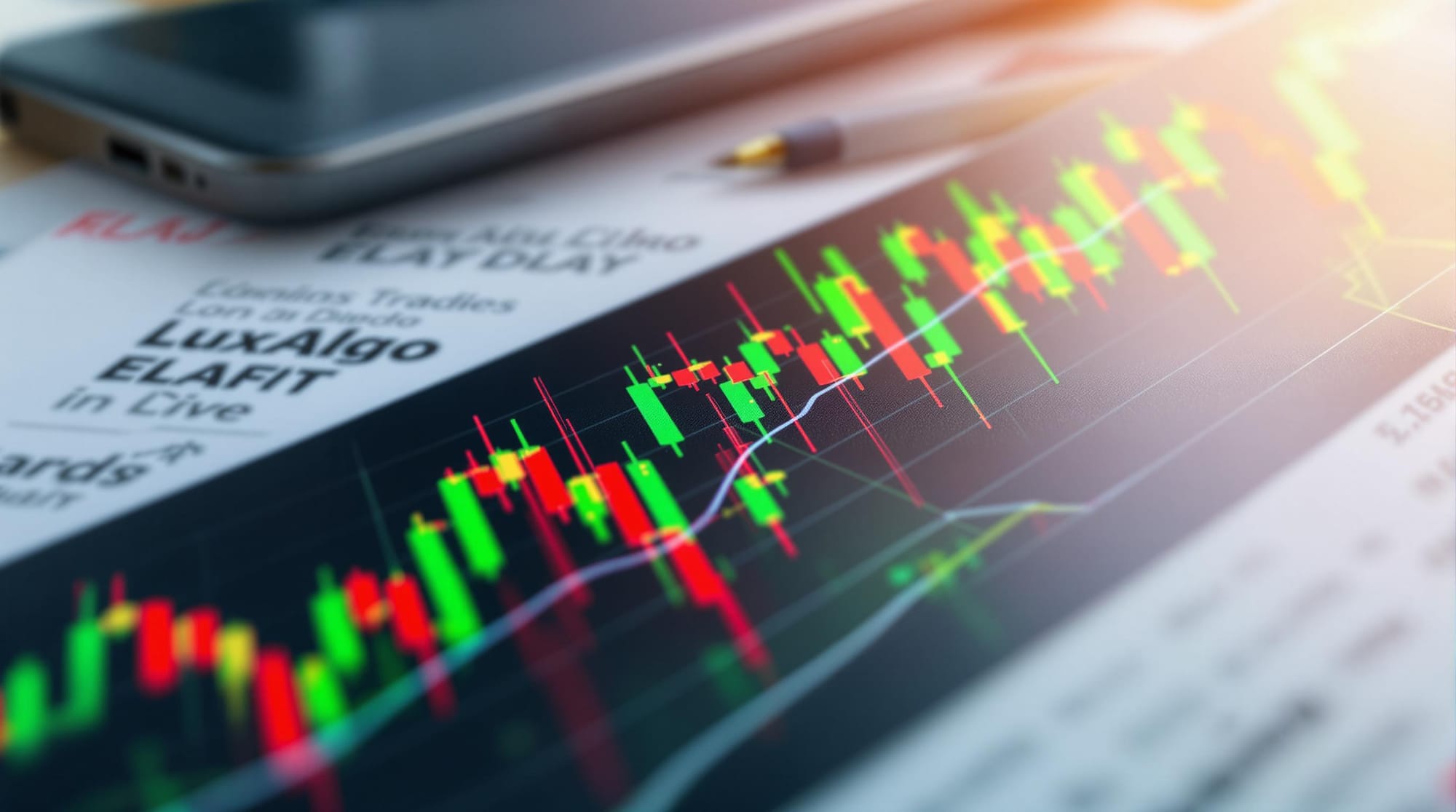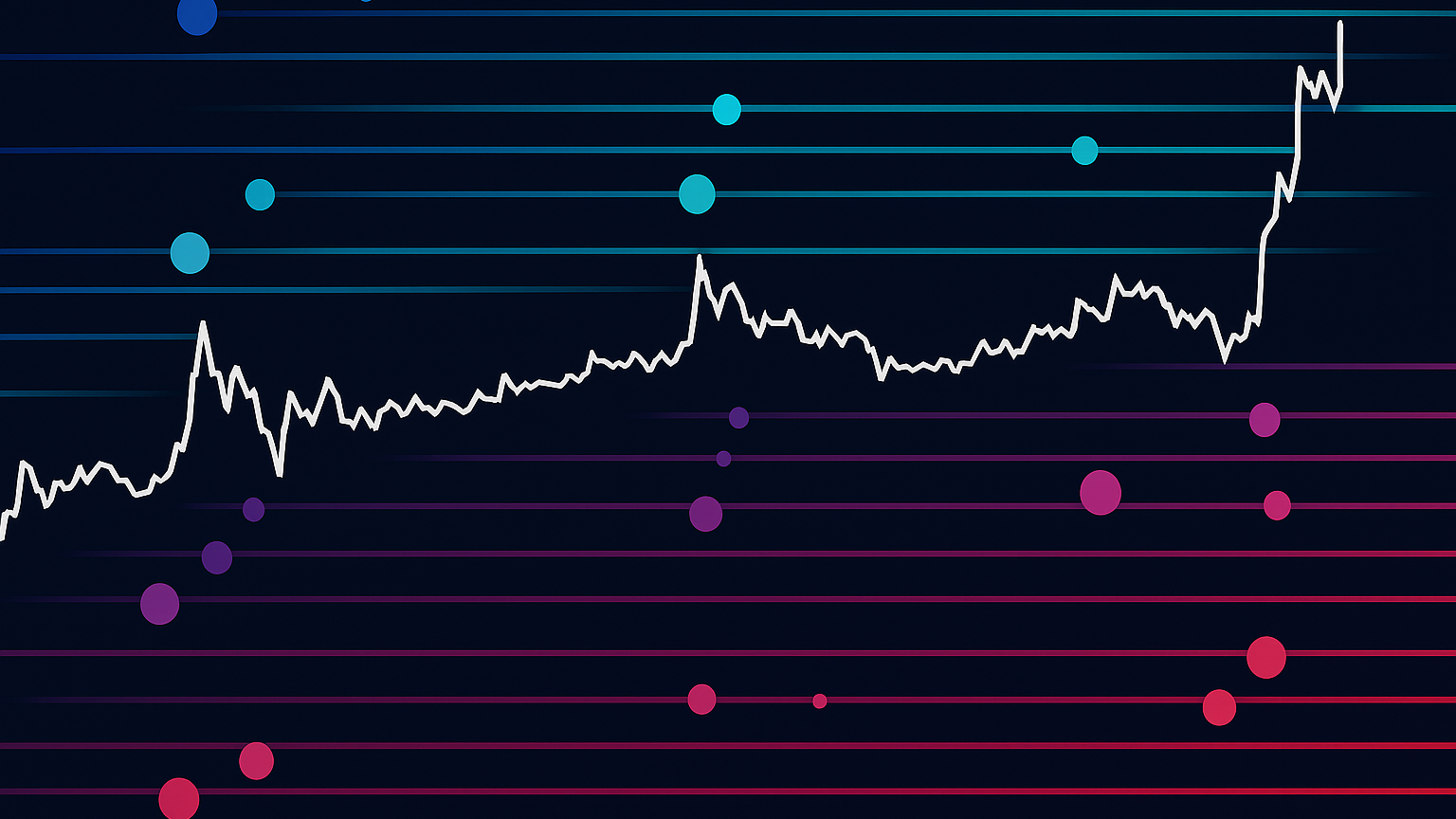Understand the critical differences between risk-reward ratio and win rate in trading to enhance your strategy for consistent profitability.
- Risk-Reward Ratio: Measures how much you stand to gain versus what you risk losing in a trade. For example, a 1:2 ratio means risking $1 to earn $2.
- Win Rate: Tracks how often your trades are profitable. A 50% win rate means half your trades succeed.
Why They Matter Together:
- A high win rate alone doesn’t guarantee profits.
- Even with a low win rate, a good risk-reward ratio can make you profitable.
- Example: A 1:2 risk-reward ratio only needs a 33% win rate to break even.
Quick Comparison Table:
| Metric | What It Measures | Formula | Key Insight |
|---|---|---|---|
| Risk-Reward Ratio | Profit potential vs. risk per trade | (Take Profit - Entry) : (Entry - Stop Loss) | Higher ratio = fewer wins needed |
| Win Rate | Percentage of successful trades | (Winning Trades / Total Trades) × 100% | High rate ≠ guaranteed profit |
Balancing these metrics is the secret to long-term trading success. Use tools like expectancy (profit per trade) and backtesting to refine your strategy. Let’s dive deeper into how to align these metrics and boost your profitability.
Understanding the Risk-Reward Ratio
The risk-reward ratio measures the potential profit compared to the potential loss in a trade. It’s a key tool that helps traders decide whether a trade is worth the risk by comparing possible gains and losses [1].
How to Calculate Risk-Reward Ratio
The formula for calculating the risk-reward ratio is:
(Potential Profit) / (Potential Loss)
- Potential Profit = Take Profit - Entry Price
- Potential Loss = Entry Price - Stop Loss
Example: For a long trade where the entry price is $60.00, the stop loss is $59.90, and the take profit is $60.20, the calculation looks like this: (60.20 - 60.00) / (60.00 - 59.90) = 2.
This gives a 1:2 risk-reward ratio, meaning for every $1 risked, the trader expects a $2 return [1] [2].
Why Risk-Reward Ratio Is Important
"The reward to risk ratio (RRR, or reward risk ratio) is maybe the most important metric in trading and a trader who understands the RRR can improve his chances of becoming profitable." [3]
Here’s a practical example: A trader with a 70% win rate but a poor 1:0.5 risk-reward ratio will barely make any profit over 10 trades. On the other hand, improving to a 1:2 ratio can lead to much higher profits, even with fewer winning trades.
The table below illustrates how different risk-reward ratios affect the win rate needed to break even. Higher ratios mean fewer winning trades are required to turn a profit:
| Risk-Reward Ratio | Required Win Rate to Break Even | What It Means |
|---|---|---|
| 1:1 | 50% | Equal risk and reward |
| 1:2 | 33.33% | Fewer wins needed |
| 1:3 | 25% | Better odds for profitability |
| 2:1 | 66.67% | High accuracy required |
While mastering the risk-reward ratio is crucial, it’s only part of the equation. Consistent profitability also depends on balancing it with your win rate. The risk-reward ratio helps evaluate the potential of individual trades, but understanding your win rate is just as important for assessing overall performance.
What Does Win Rate Mean?
Win rate measures how often a trading strategy results in profitable trades. While the risk-reward ratio looks at the potential outcomes of a single trade, win rate focuses on consistency. To get the full picture, evaluate win rate alongside metrics like the risk-reward ratio.
How to Calculate Win Rate
Calculating win rate is simple:
(Number of Winning Trades / Total Trades) x 100%
For example, if you have 20 profitable trades out of 50 total trades, your win rate is 40%. This formula helps you see how often your trades are successful.
Limitations of Focusing Only on Win Rate
It’s a common misconception that a high win rate guarantees success. Without good risk management, even strategies with high win rates can lose money. Profitability depends on how win rate interacts with the risk-reward ratio of each trade.
Here’s a breakdown of different scenarios:
| Win Rate | Risk-Reward Ratio | 10 Trades Result | Overall Outcome |
|---|---|---|---|
| 70% | 1:0.5 | -$200 | Loss |
| 40% | 1:3 | +$800 | Profit |
| 50% | 1:1 | $0 | Break even |
The takeaway? Win rate alone doesn’t determine success. A balanced trading approach— combining a reasonable win rate with solid risk management and a favorable risk-reward ratio— can lead to consistent profits [1].
Understanding how win rate and risk-reward ratio work together is crucial for building a trading strategy that delivers results.
Risk-Reward Ratio vs. Win Rate: Key Comparisons
Now that we've broken down each metric, let's dive into how they compare and their impact on trading strategies.
Key Differences Between Risk-Reward Ratio and Win Rate
Though both metrics are critical for assessing trading performance, they serve different roles in shaping strategies. The risk-reward ratio highlights the relationship between potential profit and risk per trade, while the win rate measures how often trades are successful.
| Aspect | Risk-Reward Ratio | Win Rate |
|---|---|---|
| Focus | Profit potential vs. risk per trade | Frequency of successful trades |
| Formula | (Take Profit - Entry) : (Entry - Stop Loss) | (Winning Trades / Total Trades) × 100% |
| Strategy Influence | Guides position sizing and profit targets | Affects trading frequency |
| Dependency | Higher ratios allow for lower win rates | Tied to Risk-Reward Ratio: 1 / (1 + Risk-Reward Ratio) |
| Risk Control | Defines trade exit points | Reflects strategy reliability |
While understanding these differences is important, the real test is blending the two metrics effectively [2] [3].
Finding the Balance Between Win Rate and Risk-Reward Ratio
Balancing these metrics requires recognizing their trade-offs. Instead of favoring one over the other, successful traders aim to optimize both within practical limits.
For example, a trader with a 60% win rate and a 1.5:1 risk-reward ratio might boost profitability by shifting to a 2:1 ratio, even if the win rate drops to 50% [4] [2].
To achieve this balance, traders should focus on:
- Adjusting position sizes based on risk-reward setups
- Setting clear profit targets while managing risk
- Placing consistent stop-loss levels
- Aligning take-profit levels with market conditions
Tools like LuxAlgo can assist traders in refining strategies and backtesting setups to align win rates and risk-reward ratios with their goals. The key is finding a balance that suits their trading style.
This approach helps avoid the trap of prioritizing one metric too much, which often leads to unsustainable results. Experienced traders know that the path to long-term profitability lies in harmonizing consistent wins with well-planned risk-reward setups.
How to Balance Risk-Reward Ratio and Win Rate
Using Expectancy to Measure Strategy Profitability
Expectancy is a powerful metric that combines win rate and risk-reward ratio to show the average profit or loss you can expect per trade. Instead of relying on individual metrics, it gives a clearer picture of your strategy's overall profitability.
Here’s the formula: Expectancy = (Win Rate × Average Win) - (Loss Rate × Average Loss).
For example, if your win rate is 60%, your average win is $200, and your average loss is $100, the expectancy works out to $80 per trade [1].
A positive expectancy means your strategy is likely profitable, while a negative expectancy signals that adjustments are needed. By focusing on improving expectancy, traders can refine their strategies to achieve better results.
Improving Strategies for Better Results
To improve your trading performance, pay attention to these critical areas:
| Aspect | Adjustment | Impact |
|---|---|---|
| Entry Points | Use technical analysis | Boosts win rate |
| Position Sizing | Match risk-reward setups | Improves returns |
| Stop Loss | Place at key levels | Reduces losses |
| Take Profit | Align with market structure | Increases profitability |
To fine-tune your strategy, consider using tools like LuxAlgo to analyze performance, focus on setups with higher probability, and scale your positions based on the quality of each setup. Always maintain disciplined risk management.
Experienced traders stay ahead by:
- Regularly reviewing and tweaking their strategies
- Leveraging advanced tools and indicators
- Following consistent risk management rules
The goal is to strike a balance where neither win rate nor risk-reward ratio dominates. A well-balanced approach ensures your strategy can adapt to different market conditions while staying profitable. Using advanced tools like LuxAlgo can help align these metrics for even better results.
Tools to Improve Risk-Reward Ratio and Win Rate
LuxAlgo: Tools for Strategy Optimization

LuxAlgo offers a range of tools designed to help traders fine-tune their strategies by analyzing past data and improving key metrics. Some of the platform's standout features include:
| Feature | Purpose | Benefit |
|---|---|---|
| Price Action Toolkit | Pinpoints high-probability setups | Improves trade accuracy |
| AI Backtesting Assistant | Evaluates strategy performance | Confirms risk-reward metrics |
| Trade Screeners | Filters trade opportunities | Highlights the best setups |
The trade screeners, for instance, allow traders to focus on setups that meet specific criteria, saving time and effort. While LuxAlgo simplifies strategy refinement, traders still need to prioritize backtesting to verify and adjust metrics. By combining LuxAlgo's tools with thorough backtesting, traders can better align their win rate with a favorable risk-reward ratio.
Why Backtesting Matters for Balancing Metrics
Backtesting is a critical step in building reliable trading strategies, as it enables traders to test their methods without risking actual money. It not only confirms a strategy's potential but also helps uncover the best risk-reward and win rate combinations for profitability.
For instance, a strategy with a 1:2 risk-reward ratio requires at least a 32% win rate to break even. Backtesting helps traders determine if their approach consistently meets or exceeds this threshold. Key insights gained through backtesting include:
- Strategy performance: Whether the approach delivers consistent results
- Ideal metrics: The right balance between risk-reward ratio and win rate
- Market adaptability: Identifying conditions where the strategy thrives or falters
Backtesting also highlights the importance of balancing win rate and risk-reward ratios. Even strategies with high win rates can fail if the average loss outweighs the average gain. For example, a strategy with a 70% win rate could still lose money if average losses ($300) are significantly larger than average wins ($100) [1].
Conclusion: Balancing Metrics for Better Trading
Success in trading hinges on understanding how the risk-reward ratio and win rate work together. Focusing only on win rate can lead to poor decisions. The key to profitability lies in how these metrics align. This is where expectancy comes into play— it’s a powerful tool for evaluating the overall performance of a trading strategy.
A good example of this balance is the relationship between risk-reward ratios and win rates. Take a 1:2 risk-reward ratio: traders only need a 33.3% win rate to break even [2]. This highlights why chasing a high win rate without considering the risk-reward ratio can be a mistake.
Platforms like LuxAlgo simplify this process. Tools such as the AI Backtesting Assistant and Price Action Toolkit help traders fine-tune their strategies, ensuring win rate and risk-reward ratios align for better outcomes.
Profitable trading requires constant monitoring and tweaking of these metrics. Markets change, and so should your approach. By using the right tools and continuously analyzing performance, traders can maintain strategies that deliver consistent results over time.
FAQs
What is the difference between risk-reward ratio and win rate?
The risk-reward ratio compares how much you stand to gain versus how much you could lose in a trade. For example, risking $100 to potentially earn $200 gives you a 1:2 risk-reward ratio. On the other hand, the win rate is the percentage of your trades that are profitable, regardless of how much you win or lose on each trade.
| Metric | Example | What It Measures |
|---|---|---|
| Risk-Reward Ratio | 1:2 ($100 risk, $200 reward) | Compares potential profit to risk |
| Win Rate | 70% winning trades | Percentage of successful trades |
Tools like LuxAlgo's AI Backtesting Assistant can help traders fine-tune both metrics simultaneously. By understanding how these two metrics differ, you can better align them to create a balanced and effective trading strategy.







